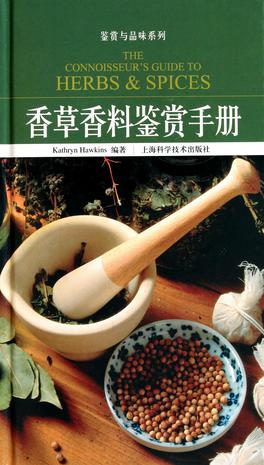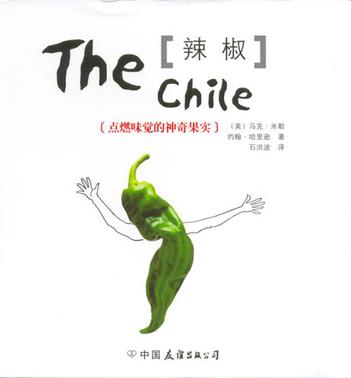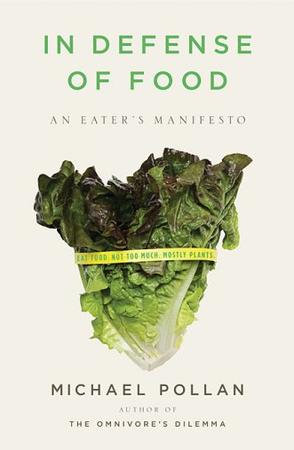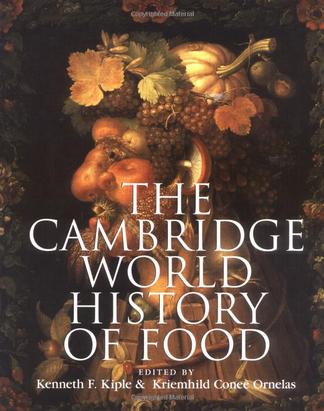-

食品恐慌
《食品恐慌》主要内容:“每个人都要吃东西,而本书则清晰地解释了为什么‘吃’在未来数年内会成为问题。在这部书中,保罗·罗伯茨向我们展示出食品行业如何陷入了困境,又将如何走出困境。”世界知名环保主义作家比尔·麦吉本。作者在这部深入探讨全球食品问题的书中发人深省地指出:“几十年来,人们听到的都是‘我们的食品体系是最完善的’这样的说法,如今的情形仿佛是帷幕被拉开,我们得以瞥见食品体系背后的‘阴暗构造’。近来,全球出现的一连串食品安全事件仿佛都说明了食品监管机构的无能和不可靠,而调查员、政策制定者及产业管理人员尽管承认此类事件确有发生,他们的话却总是模棱两可,这更加深了公众的印象——这些大型食品公司和权力机构承认,现代的食品体系存在问题,而他们,包括所有人在内,对此却无能为力……”作者指出,《食品恐慌》的核心就是想提醒读者,今天食品行业很多合乎标准的做法——降低成本、扩大生产规模、拓宽市场——却为食品生产带来了很多不良后果。简言之,《食品恐慌》讨论的就是需求和实际供应之间不断升级的矛盾,同时指出粮食作为一种经济命题和一种生物学现象,两种角色之间的鸿沟就是今天我们要应对的最大挑战。食品问题与我们每个人都息息相关,但面对食品安全、食品卫生、食品疾病,我们很难再如此平静了。当我们不知道还敢吃什么的时候,对食品的恐慌就会“莫名其妙”地袭来,而当我们看清了隐藏在食品生产背后的纷乱场景时,或许我们还会稍许平静些,也或许我们能为未来健康的食品体系做点什么。 -

香草香料鉴赏手册
《香草香料鉴赏手册》描述了香草和香料丰富多彩的历史,对如何栽培、收获和晒干香草香料也做了指导,还介绍了香草和香料的烹饪用途。 多样性是否草香料的生命,我们可以用看起来平常的香草香料调试出各色美味的菜肴,从罗勒到百里香,从胡荽到鼠尾草,用香草香料来烹饪会给菜肴带来意料之外的惊喜,使你的味蕾得到充分的享受。《香草香料鉴赏手册》阐释了每种香草香料的性状和烹调用途。你将了解到如何充分运用它们的优点。书中还介绍了复合香料。 -
![[豆.豆.豆] [豆.豆.豆]](http://www.xiangshibook.com/uploads/2016/0918/20160918203853996812.jpg)
[豆.豆.豆]
《豆,豆,豆:38种豆子的美味关系》简介:你可能很熟悉做雪糕的红豆绿豆、炒菜的四季豆、炖汤的芸豆,可是红花菜豆、阿帕卢萨马豆、巧克力豆子和“海中女神”呢?15年来,豆子专家伊丽莎白?贝瑞在她靠近圣达菲的牧场培育这些稀罕豆子,而由《纽约时代》的美食专栏作家弗洛伦斯?法布里肯撰写的这本《豆,豆,豆:38种豆子的美味关系》把伊丽莎白引入公众视线。豆子在地球上存在的历史已经超过1万年,而书中特别列举出超过35种常见和罕见的豆子——有些你可能见过,更多的却闻所未闻。每种豆子都有美丽的照片,还配有40多道美味菜谱,全部由美国一流大厨提供。小小豆子,原来并不寻常呢! -

辣椒
对“无辣不欢”的辣椒迷们来说,辣椒里蕴含着无穷无尽的美妙滋味:火热或温和,刺激或甘甜、醇厚或灼烧……。圣菲市山狗咖啡屋的主厨马克?米勒是美国最有声望的大厨之一,同时,也是一个不折不扣的辣椒迷。他在这本书里展示了辣椒的历史和90多种在美国及墨西哥地区常见的辣椒,从肥厚的绿柿子椒到用来做塔巴斯克辣椒汁的塔巴斯克辣椒,每一种都标示出他亲自鉴定的辛辣指数。十多道令人垂涎的辣椒菜谱,更是绝对不容错过。 -

In Defense of Food
What to eat, what not to eat, and how to think about health: a manifesto for our times "Eat food. Not too much. Mostly plants." These simple words go to the heart of Michael Pollan's In Defense of Food, the well-considered answers he provides to the questions posed in the bestselling The Omnivore's Dilemma. Humans used to know how to eat well, Pollan argues. But the balanced dietary lessons that were once passed down through generations have been confused, complicated, and distorted by food industry marketers, nutritional scientists, and journalists-all of whom have much to gain from our dietary confusion. As a result, we face today a complex culinary landscape dense with bad advice and foods that are not "real." These "edible foodlike substances" are often packaged with labels bearing health claims that are typically false or misleading. Indeed, real food is fast disappearing from the marketplace, to be replaced by "nutrients," and plain old eating by an obsession with nutrition that is, paradoxically, ruining our health, not to mention our meals. Michael Pollan's sensible and decidedly counterintuitive advice is: "Don't eat anything that your great-great grandmother would not recognize as food." Writing In Defense of Food, and affirming the joy of eating, Pollan suggests that if we would pay more for better, well-grown food, but buy less of it, we'll benefit ourselves, our communities, and the environment at large. Taking a clear-eyed look at what science does and does not know about the links between diet and health, he proposes a new way to think about the question of what to eat that is informed by ecology and tradition rather than by the prevailing nutrient-by-nutrient approach. In Defense of Food reminds us that, despite the daunting dietary landscape Americans confront in the modern supermarket, the solutions to the current omnivore's dilemma can be found all around us. In looking toward traditional diets the world over, as well as the foods our families-and regions-historically enjoyed, we can recover a more balanced, reasonable, and pleasurable approach to food. Michael Pollan's bracing and eloquent manifesto shows us how we might start making thoughtful food choices that will enrich our lives and enlarge our sense of what it means to be healthy. -

The Cambridge World History of Food
An undertaking without parallel or precedent, this monumental two-volume work encapsulates much of what is known of the history of food and nutrition. It constitutes a vast and essential chapter in the history of human health and culture. Ranging from the eating habits of our prehistoric ancestors to food-related policy issues we face today, this work covers the full spectrum of foods that have been hunted, gathered, cultivated, and domesticated; their nutritional makeup and uses; and their impact on cultures and demography. It offers a geographical perspective on the history and culture of food and drink and takes up subjects from food fads, prejudices, and taboos to questions of food toxins, additives, labeling, and entitlements. It culminates in a dictionary that identifies and sketches out brief histories of plant foods mentioned in the text - over 1,000 in all - and additionally supplies thousands of common names and synonyms for those foods.